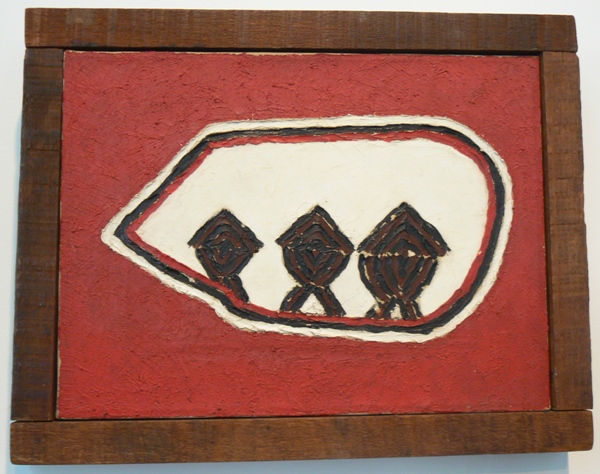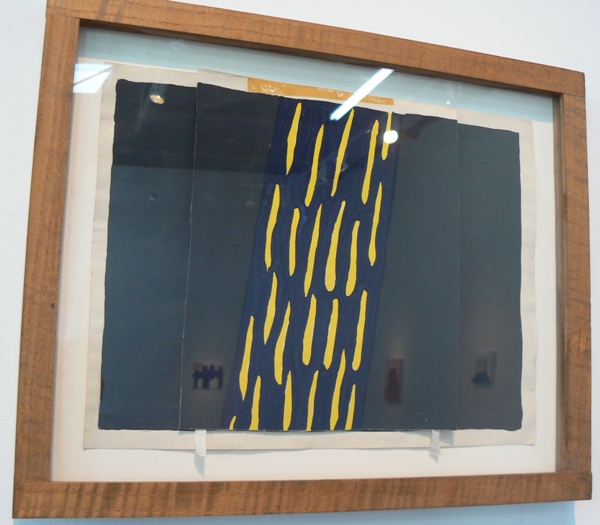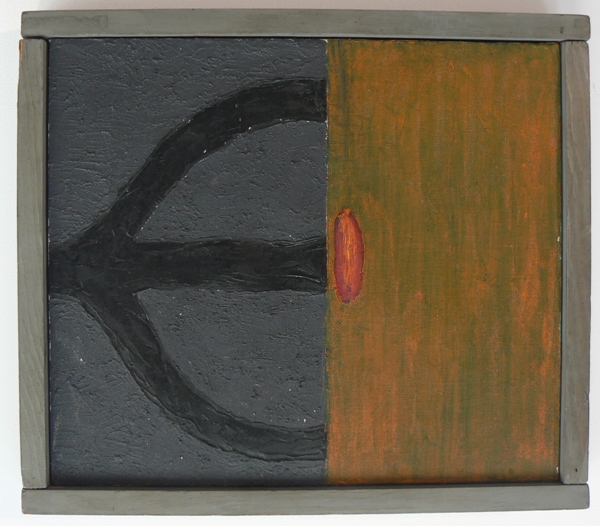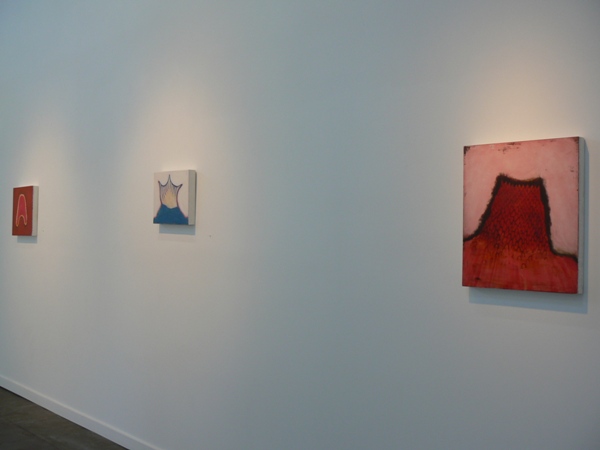So, remember how a few weeks ago I wrote about how Dallas galleries need to mount more shows with: “contemporary work by a handful of emerging and established artists under the umbrella of a theme, in relation to older works of art or some other object(s), also on view.” Well, Liliana Bloch from Kirk Hopper Fine Art wrote me to tell me to get my finger-wagging self over to KHFA to see the show Forrest Bess 100Years: Paintings by Forrest and His Friends with work by the late, great, hermit-eccentric, artist Forrest Bess, alongside new work by his protégés and visual followers Chris Martin, Andrew Masullo and Chuck Webster.
All of the work here is very small and mounted high, giving it all a bit more weight and verticality; and in the case of Bess’s small paintings with homemade frames, the out-of-reachness of the installation made the work seem all the more precious. Bess’s work is powerful in its preciousness — aching with an intensity and fervor of ideas that, even for its size, challenges the monolithic works by his AB EX contemporaries at the mid-century,when most of his works on view here were made. Certainly, because of their scale, and the crude handmade frames, Bess’s work immediately reads in an intimate, spiritually-leaded way. Each painting testifies to the urgency of the artist to record the visions that populated his imagination.
In the New York Times in May 1988, critic Michael Brinson describes Bess’s work this way, and it’s just right:
The paintings are small… the art critic John Yau suggests that holding and looking into them is like holding and looking into a face or a book. Although there are eyes and bodies and deserted landscapes under a big sky, the paintings are largely abstract. There may be rows of stripes, or white boxes in black fields. There are suggestions of genetic and biological diagrams. Everything is animated by desire. A construction of triangles rises like the branches of a pine tree, then begins to fall. A cluster of vertical lines huddles and vibrates together. White lines flow easily into a red ring like a chart of sexual anticipation.
The works by Martin, Masullo and Webster gathered here with Forrest Bess’s create wonderful visual relationships, spinning off of the graphic power of Bess’s painted forms and colors. While none of Bess’s three counterparts here has quite imbued their work with as much pathos as Bess himself did, the influence of Bess is evident in the layered and bold configurations in each of their works.
Forrest Bess 100 Years is a quiet, measured, thoughtful little exhibit that, under Kirk Hopper’s curation of artworks and Bess artifacts, feels, without any pretension, like a tutorial in something we all should know more about.
Editorial note: I’ve been trying to remember for days where I read a piece on Bess that layed out his eccentricities in a very matter-of-fact way, while still paying his artwork its due. I thought it was a recent bit in the New Yorker. Almost — it was Peter Schjeldahl in The Seven Days Art Columns. Read it here.







1 comment
Very Nice –